Distinguished Critique: Batman: Second Chances Review
Several mediocre stories by experienced storytellers are bolstered somewhat by understanding this volume's historical significance
—by Nathan on February 15, 2025—
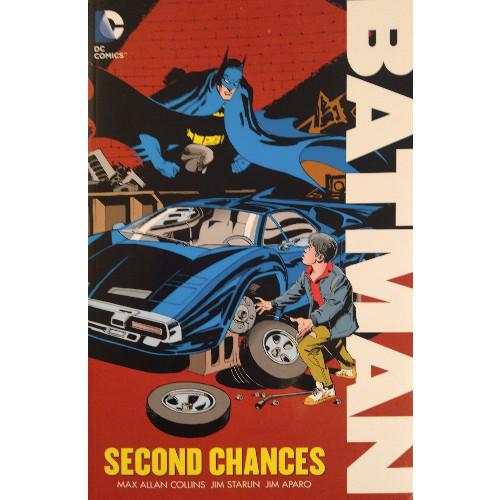
By time the cataclysmic Crisis on Infinite Earths swept through the DC multiverse, Batman had already acquired two sidekicks who served him under the guise of Robin: Dick Grayson and Jason Todd. Dick had, a few years prior in pre-Crisis continuity, left Batman's side and joined the Teen Titans, eventually taking up the identity of Nightwing. As he originally appeared, Jason had an origin similar to Dick's: an orphan whose acrobat parents were murdered who was then adopted by a certain billionaire bachelor. Post-Crisis, that changed for Jason.
The review of this volume is long in coming, and in a perfect world, I would have used this to introduce Jason prior to discussing his infamous, untimely demise. Circumstances—including the fact this volume is massively out-of-print and hard to find for a decent price—led me to where I am now. Mostly containing Batman issues immediately following Frank Miller's "Year One" narrative, Second Chances does indeed live up to its title, not only for the vaunted vigilante whose name it bears but also for a young hero in need of a reintroduction.
Batman: Second Chances
Writers: Max Allan Collins, Jo Duffy, and Jim Starlin
Pencilers: Jim Starlin, Denys Cowan, Chris Warner, Dave Cockrum, Kieron Dwyer, Jim Aparo, and Norm Breyfogle
Inkers: Jim Starlin, Greg Brooks, Mike DeCarlo, Don Heck, and Norm Breyfogle
Colorists: Daina Graziunas and Adrienne Roy
Letterers: John Costanza, Todd Klein, Agustin Mas, and Albert DeGuzman
Issues: Batman #402-403, Batman #408-416, and Batman Annual #11
Publication Dates: December 1986-January 1987, June 1987-February 1988
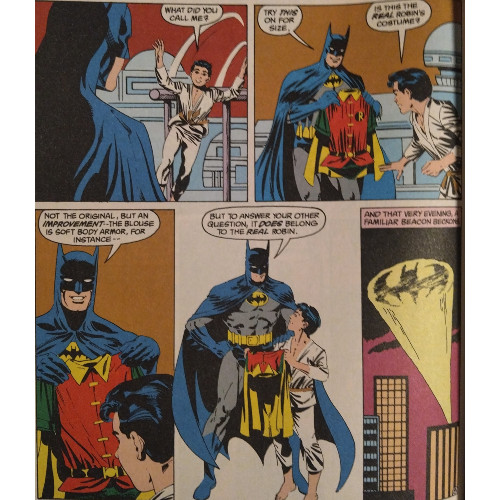
Jason Todd had a problem. Fans didn’t like him.
I've explored the Batman fandom's ultimate act of distaste towards Jason, a tense vote which condemned the young man to death at the hands (and the crowbar and the bombs) of the Joker. But the dislike towards Jason stemmed from deeper animosities traced back to his earliest adventures: he wasn't Dick Grayson. So DC tried a different trick. Following an updated origin of the Caped Crusader—and in the same year DC debuted then-modernized versions of characters such as Wonder Woman, Green Arrow, and the Question, as well as teams like the Justice League and Suicide Squad—DC tried giving the second Robin new wings.
Writer Max Allan Collins, an American mystery writer best known in comic circles for Road to Perdition, supplies the bulk of the issues here, maintaining its title character's gritty, street level approach to superheroics as depicted by Miller in "Year One" (but undoubtedly owing its Silver Age origins to the work of Dennis O'Neil and Neal Adams). Several of these narratives are one-and-done mystery narratives, which is slightly disappointing given the fantastically interwoven, detailed story Miller delivered in "Year One." Yes, "Year One" was a "flashback" to Bruce Wayne's initial steps in developing his vigilante identity, with Batman #408 drawing us back into the post-Crisis present. The status quo that "Year One" interrupted is reestablished, which may make diving into Batman #408 confusing for anyone not in the know. Suddenly, Robins have been switched, Dick Grayson wearing the cowl instead of Jason, whom readers are then reintroduced to later in the issue. Once you clear away the confusion, the story proceeds in a fine fashion, but buyer be warned: you will leap from the post-Crisis present to the post-Crisis past in the span of a single turned page.
Which is where we meet the new Jason Todd.
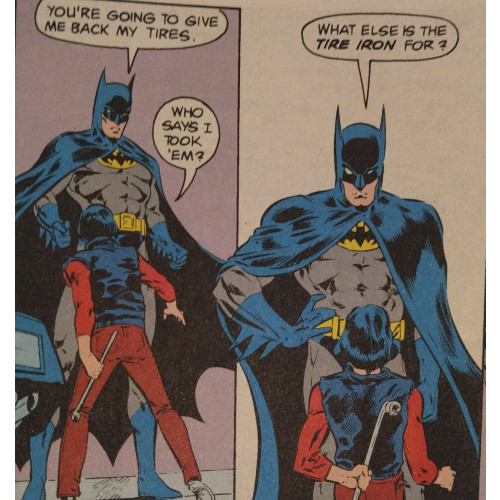
I don't feel any particular hostility towards Jason Todd as a character. Naturally, this volume does not include every issue leading up to "A Death in the Family," with 10 or so issues precluding Jason's youthful demise. We don't see, for example, the incident where Jason is very heavily implied to have pushed a criminal to his death. He is presented here as brash, somewhat arrogant, and willing to push the boundaries Batman has set for him—in one issue, Jason captures the Scarecrow after Batman tells him to merely observe the villain, accidentally exposing Jonathan Crane to his own fear toxin. There is a slight streak of violence in him but nothing which would suggest murder. He is not Dick Grayson, not by a long shot, but Collins and Jim Starlin (particularly Starlin) allow decent complication to Jason's character.
He's a broken kid, an orphan loner we first encounter stealing tires off the Batmobile. His blatant chutzpah leads Bruce to embracing him, seeing in Jason someone worth saving. The boy's cockiness is a dark part of his personality Bruce wishes to redeem, redirecting his anger towards a higher, better purpose. In this way—and, engagingly, in Bruce's failure to completely change Jason—the second Robin distinguishes himself from Dick Grayson. In the future Nightwing, Batman saw a kindred spirit, an orphan who needed what Bruce himself lost at such an early age: a father. Collins and Starlin don't harp on the adoptive familial connection between Bruce and Jason, leaving their relationship as more of a mentor/mentee level than having Jason feel like a second son to Bruce.
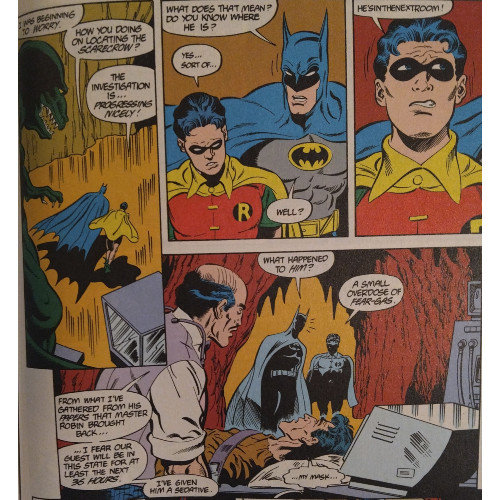
Subtly, the volume presents Bruce with a "second chance" as well. One of the final issues highlights the rift created between Bruce and Dick Grayson, allowing them to hash out their misunderstandings and miscommunications. Batman is allowed a deeper level of emotion here, pushed to be real and raw with Nightwing after some prodding by his former sidekick. Their wounds are not fully healed in the wake of this dialogue, but the bedrock of their brokenness is reached. We see Bruce, unmasked, as both a vigilante missing his sidekick and a father missing his son. We recognize the "why" behind taking Jason in, Batman's desperate need to fill a void. Laid bare, the staunch Dark Knight is given a few unique moments of humanity reflected in other places in the volume—Bruce dives headfirst into a murder case which takes a personal turn, he's injured in a fight with Two-Face, he feels betrayal at the hands of a seemingly turncoat Jim Gordon.
Given the volume's grittier, more personal nature, I was somewhat surprised to see a bit of silliness slip in, elements which would feel more at home in a Silver Age story than in tales constructed by a known crime novelist and the excellent creator behind The Infinity Gauntlet and The Death of Captain Marvel. When Batman first encounters Jason, he brings the boy to a home for other orphans run by a white-haired old lady secretly training the boys to become criminals. The sight of a kindly grandmother teaching boys about gun types like she's leading a math class feels at odds with some of the more grounded narratives. Dual duels with Two-Face don't take the scarred schemer's proclivity for doubles deeper than some surface-level guesswork for our heroes, even if the issues reinforce the tradition of having a Robin face Harvey Dent's demented alter ego early in their caped careers.
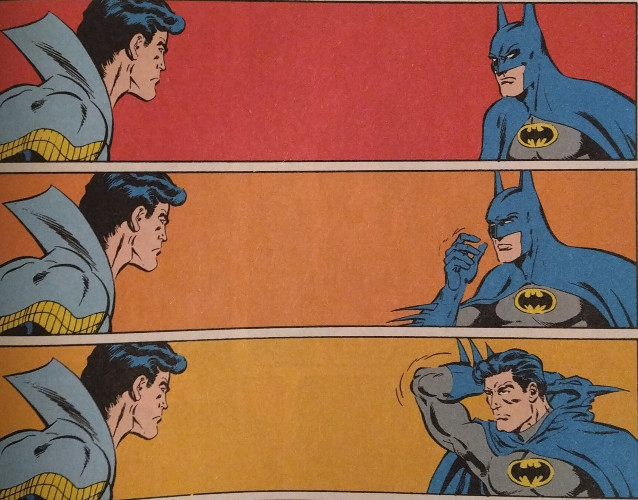
The volume's general "one-off" nature does mean a tie-in issue to DC's 1988 crossover event Millennium isn't as egregiously distracting as it otherwise could be. There is no overarching narrative the tie-in issue feels like it's interrupting. We begin in the middle of a case, like several other issues, with the context beholden to a crossover series rather than mere exposition. It's a story like all the others, with only the ending feeling largely deflating as we're not necessarily aware of where the story turns next (unless, like myself, you actually read Millennium). A singular conflict and a singular foe are both dispatched, with not much of the crossover's outside shenanigans "spilling" into the individual issue. In other words, we're not left with a dire cliffhanger that would only be resolved if you picked up the corresponding issues of Flash, Superman, or Wonder Woman.
Most of the individual stories themselves are not much to boast about, consisting of those largely single-issue cases I mentioned previously. The volume's status as a generally expensive collector's item, I believe, stems from Jason's initial appearances in post-Crisis continuity, with most coveting the collection for its cultural significance over its narrative quality. Thus, packaged in with Jason's "debut" are several of these forgettable narratives, regardless of the popularity of the two writers involved. Nothing here overtly attests to either Collin or Starlin's fabled writing chops or comes near the quality of their magnum opus narratives or the famous "slice" of Miller's Batman issues "missing" from the middle of this volume. This is just a handful of chapters within a monthly Batman book, and only a select few of that handful deserve a higher status. Jason's post-Crisis origin is an engaging look at a young man desperately trying to fill the little green boots of his predecessor, made all the more tragic by a future now clear to fans yet painstakingly unknown to then-readers and our oblivious Dynamic Duo.